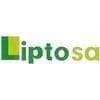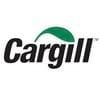Factors that influence mechanical transmission of Porcine Reproductive and Respiratory Syndrome Virus at Slaughter Plant Lairage
Published: November 10, 2025
Source : L. Greiner 1, J. Lowe 2, R. McCann 2, W. Hollis 3* / 1 Carthage Innovative Swine Solutions, LLC, Carthage; 2 Veterinary Clinical Medicine, University of Illinois, Champaign; 3 Carthage Veterinary Service, Ltd, Carthage, United States.
Summary
Keywords: Lairage, PRRSV, Transmission
Introduction:
Porcine reproductive and respiratory syndrome virus (PRRS) can decrease growth and cause infertility and abortion in adult pigs. This study was conducted to further understand the risk associated with PRRS transmission/movement at the lairage facility.
Materials and Methods:
A contact model for the unloading dock was employed using a 68L plastic tub. The model dock was contaminated with a mixture of 1L of PRRS and PEDV-negative manure and 1L of new pine shavings. This material was mixed with 10cc of Ingelvac PRRS MLV (Boehringer Ingelheim Vetmedica Inc). The foot contact was modeled by using a clean plastic boot cover to step from the model dock onto a model trailer (40.6cm x 29.2 cm, 7000-45 Disposable Aluminum Cookie Sheet). Samples were collected using a method previously described by Lowe et al. (2014). In experiment 1, 32 replicates of each of the temperatures on the model trailer (4°C, 15°C or 28°C) from the model dock prior to contact, immediately and 60 minutes after contact. In experiment 2, a 2 x 2 x 2 arrangement was used to assess the effects of temperature (4°C, 32°C), UV Light (Ambient/Supplemental light), and mechanical scraping (De-bulked/not De-bulked) on PRRS RNA transfer. Temperature was achieved with either an ice bath (4°C) or a heat lamp (32°C). A UV bulb was placed 60 cm above the floor of the tub. De-bulking was achieved by dumping the material out of the tub to simulate the act of scraping the dock. Samples were collected at 0, 10 and 60 minutes. Samples were sent to Iowa State University Veterinary Diagnostic Laboratory for rtPCR PRRS RNA analysis. All data were analyzed using Statistix 10.0.
Results:
Temperature in the trailer did not affect PRRS RNA recovered 60 minutes (p=0.36). If PRRS RNA was detected on the model dock, PRRS RNA was transferred and detected on the model trailer 80% (95% CI 70.0%, 90.0%) of the time. Only de-bulking reduced the risk of transfer (OR=0.14 95% CI [0.06, 0.32], p< 0.001). Hot temperatures on the dock increased the risk of transfer (OR=2.7 95% CI [1.43, 5.10], p=0.001). Time from dock contamination to the contact event was not associated with any changes in amount or transfer rate.
Conclusion:
These data suggest that contact at the harvest plant lairage is a risk factor for PRRS RNA transmission between sites when inadequate hygiene is practiced on livestock trailers. These risks can be mitigated, but not eliminated through mechanical removal of gross contamination of the dock. Further work is needed to validate these data under field conditions and to model the impact of a risk reduction of this magnitude on PRRS transmission risks at the industry level.
Disclosure of Interest: None Declared.
Published in the proceedings of the International Pig Veterinary Society Congress – IPVS2016. For information on the event, past and future editions, check out https://www.theipvs.com/future-congresses/.
Content from the event:
Related topics:
Mentioned in this news release:

Recommend
Comment
Share

Would you like to discuss another topic? Create a new post to engage with experts in the community.











